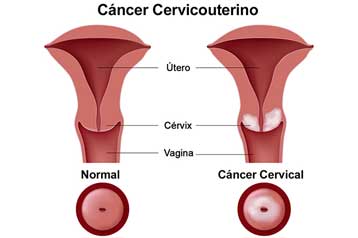Avian Influenza Infection in Humans
Although avian influenza A viruses do not usually infect humans, several instances of human infections and outbreaks of avian influenza have been reported since 1997. Most cases of avian influenza infection in humans are thought to have resulted from contact with infected poultry or contaminated surfaces. However, there is still a lot to learn about how different subtypes and strains of avian influenza virus might affect humans. For example, it is not known how the distinction between low pathogenic and highly pathogenic strains might impact the health risk to humans. Of the documented cases of human infection with avian influenza viruses, illnesses caused by highly pathogenic viruses appear to be more severe.
Because of concerns about the potential for more widespread infection in the human population, public health authorities closely monitor outbreaks of human illness associated with avian influenza. To date, human infections with avian influenza viruses detected since 1997 have not resulted in sustained human-to-human transmission. However, because influenza viruses have the potential to change and gain the ability to spread easily between people, monitoring for human infection and person-to-person transmission is important. (See "Influenza Pandemics" for more information.)
Instances of Avian Influenza Infections in Humans
Confirmed instances of avian influenza viruses infecting humans since 1997 include:
- H5N1, Hong Kong, 1997 : Avian influenza A (H5N1) infections occurred in both poultry and humans. This was the first time an avian influenza virus had ever been found to transmit directly from birds to humans. During this outbreak, 18 people were hospitalized and six of them died. To control the outbreak, authorities killed about 1.5 million chickens to remove the source of the virus. Scientists determined that the virus spread primarily from birds to humans, though rare person-to-person infection was noted.
- H9N2, China and Hong Kong, 1999 : Avian influenza A H9N2 illness was confirmed in two children. Both patients recovered, and no additional cases were confirmed. The evidence suggested that poultry was the source of infection and the main mode of transmission was from bird to human. However, the possibility of person-to-person transmission could not be ruled out. Several additional human H9N2 infections were reported from mainland China in 1998-99.
- H7N2, Virginia, 2002: Following an outbreak of H7N2 among poultry in the Shenandoah Valley poultry production area, one person was found to have serologic evidence of infection with H7N2.
- H5N1, China and Hong Kong, 2003 : Two cases of avian influenza A (H5N1) infection occurred among members of a Hong Kong family that had traveled to China. One person recovered, the other died. How or where these two family members were infected was not determined. Another family member died of a respiratory illness in China, but no testing was done.
- H7N7, Netherlands, 2003 : The Netherlands reported outbreaks of influenza A (H7N7) in poultry on several farms. Later, infections were reported among pigs and humans. In total, 89 people were confirmed to have H7N7 influenza virus infection associated with this poultry outbreak. These cases occurred mostly among poultry workers. H7N7-associated illness included 78 cases of conjunctivitis (eye infections) only; 5 cases of conjunctivitis and influenza-like illnesses with cough, fever, and muscle aches; 2 cases of influenza-like illness only; and 4 cases that were classified as "other." There was one death among the 89 total cases The death occurred in a veterinarian who visited one of the affected farms and developed acute respiratory distress syndrome and complications related to H7N7 infection. The majority of these cases occurred as a result of direct contact with infected poultry; however, Dutch authorities reported three possible instances of transmission from poultry workers to family members. Since that time, no other instances of H7N7 infection among humans have been reported.
- H9N2, Hong Kong, 2003 : H9N2 infection was confirmed in a child in Hong Kong. The child was hospitalized but recovered.
- H7N2, New York, 2003: In November 2003, a patient with serious underlying medical conditions was admitted to a hospital in New York with respiratory symptoms. One of the initial laboratory tests identified an influenza A virus that was thought to be H1N1. The patient recovered and went home after a few weeks. Subsequent confirmatory tests conducted in March 2004 showed that the patient had been infected with an H7N2 avian influenza virus. An investigation to determine the source of infection is ongoing.
- H5N1, Thailand and Vietnam, 2004: In January 2003, outbreaks of highly pathogenic influenza A (H5N1) in Asia were first reported by the World Health Organization. From December 30, 2003, to March 17, 2004, 12 confirmed human cases of avian influenza A (H5N1) were reported in Thailand and 23 in Vietnam, resulting in a total of 23 deaths. Visit www.cdc.gov/flu/avian/outbreaks/asia.htm, http://www.oie.int/, and http://www.who.int/en/ for more information.
- H7N3 in Canada , 2004: In February 2004, human infections of H7N3 among poultry workers were associated with an H7N3 outbreak among poultry. The H7N3-associated illnesses consisted of eye infections.
- H5N1, Thailand and Vietnam, 2004 and 2005: Beginning in late June 2004, new lethal outbreaks of H5N1 among poultry were reported by several countries in Asia. The new outbreaks of H5N1 in poultry in Asia were followed by renewed sporadic reporting of human cases of H5N1 infection in Vietnam and Thailand beginning in August and continuing into 2005. Of particular note is one isolated instance of probable limited human-to-human transmission occurring in Thailand in September. Visit www.cdc.gov/flu/avian/outbreaks/asia.htm, http://www.oie.int/, and http://www.who.int/en/ for more information.
Symptoms of Avian Influenza in Humans
The reported symptoms of avian influenza in humans have ranged from typical influenza-like symptoms (e.g., fever, cough, sore throat, and muscle aches) to eye infections (conjunctivitis), pneumonia, acute respiratory distress, viral pneumonia, and other severe and life-threatening complications.
Antiviral Agents for Influenza
Four different influenza antiviral drugs (amantadine, rimantadine, oseltamivir, and zanamivir) are approved by the U.S. Food and Drug Administration (FDA) for the treatment and/or prophylaxis of influenza. All four have activity against influenza A viruses. However, sometimes influenza strains can become resistant to these drugs, and therefore the drugs may not always be effective. For example, analyses of some of the 2004 H5N1 viruses isolated from poultry and humans in Asia have shown that the viruses are resistant to two of the medications (amantadine and rimantadine). Monitoring of avian viruses for resistance to influenza antiviral medications is ongoing.
centers for Diseases Control and Prevention
http://www.cdc.gov/
May 24, 2005






